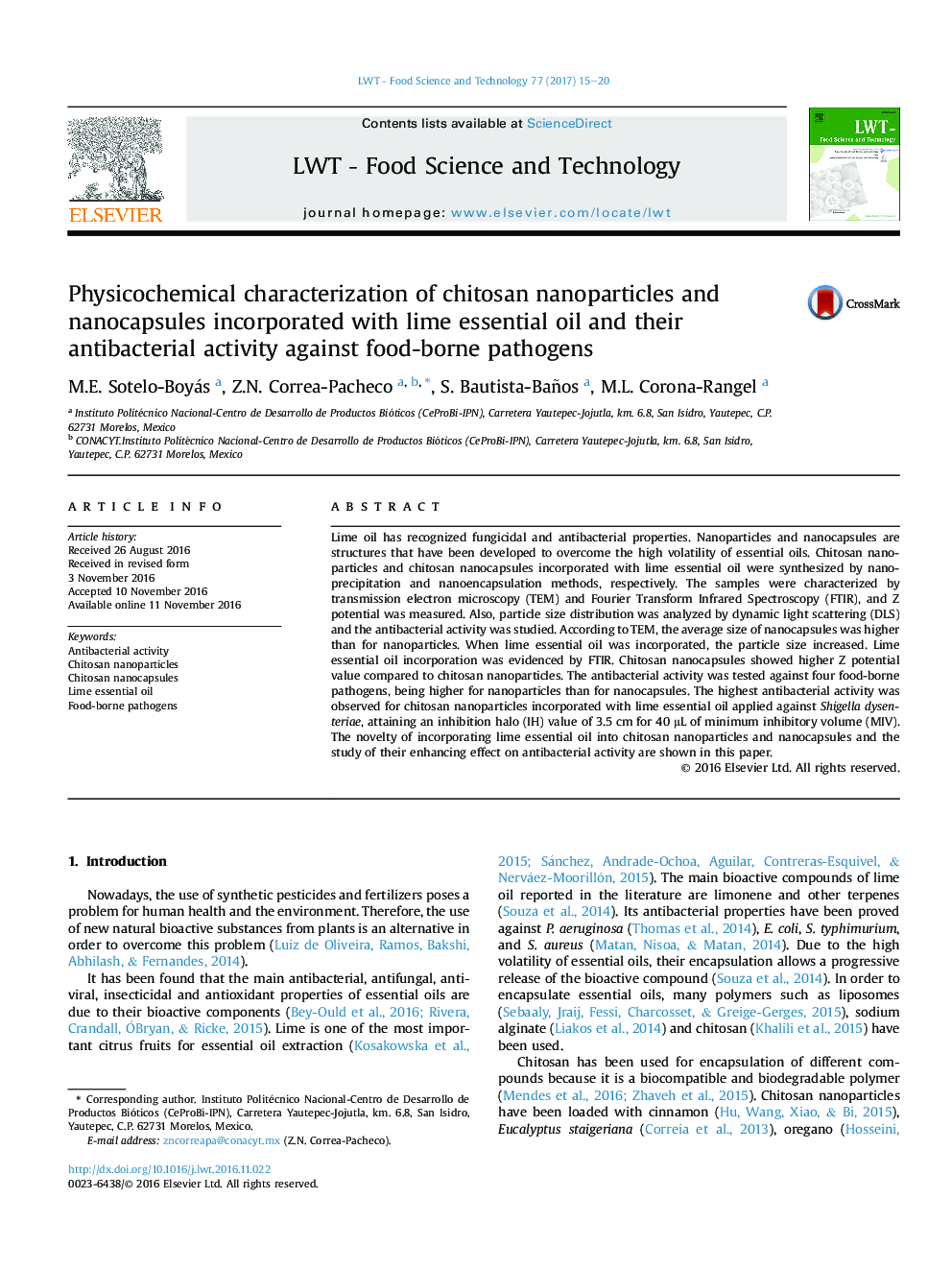| Article ID | Journal | Published Year | Pages | File Type |
|---|---|---|---|---|
| 5768831 | LWT - Food Science and Technology | 2017 | 6 Pages |
â¢Lime essential oil was incorporated into chitosan nanoparticles and nanocapsules.â¢The antibacterial activity was higher for nanoparticles than for nanocapsules.â¢The highest antibacterial activity was observed against S. dysenteriae.â¢The minimum inhibitory volume was 40 μL with an inhibition halo of 3.5 cm.
Lime oil has recognized fungicidal and antibacterial properties. Nanoparticles and nanocapsules are structures that have been developed to overcome the high volatility of essential oils. Chitosan nanoparticles and chitosan nanocapsules incorporated with lime essential oil were synthesized by nanoprecipitation and nanoencapsulation methods, respectively. The samples were characterized by transmission electron microscopy (TEM) and Fourier Transform Infrared Spectroscopy (FTIR), and Z potential was measured. Also, particle size distribution was analyzed by dynamic light scattering (DLS) and the antibacterial activity was studied. According to TEM, the average size of nanocapsules was higher than for nanoparticles. When lime essential oil was incorporated, the particle size increased. Lime essential oil incorporation was evidenced by FTIR. Chitosan nanocapsules showed higher Z potential value compared to chitosan nanoparticles. The antibacterial activity was tested against four food-borne pathogens, being higher for nanoparticles than for nanocapsules. The highest antibacterial activity was observed for chitosan nanoparticles incorporated with lime essential oil applied against Shigella dysenteriae, attaining an inhibition halo (IH) value of 3.5 cm for 40 μL of minimum inhibitory volume (MIV). The novelty of incorporating lime essential oil into chitosan nanoparticles and nanocapsules and the study of their enhancing effect on antibacterial activity are shown in this paper.
